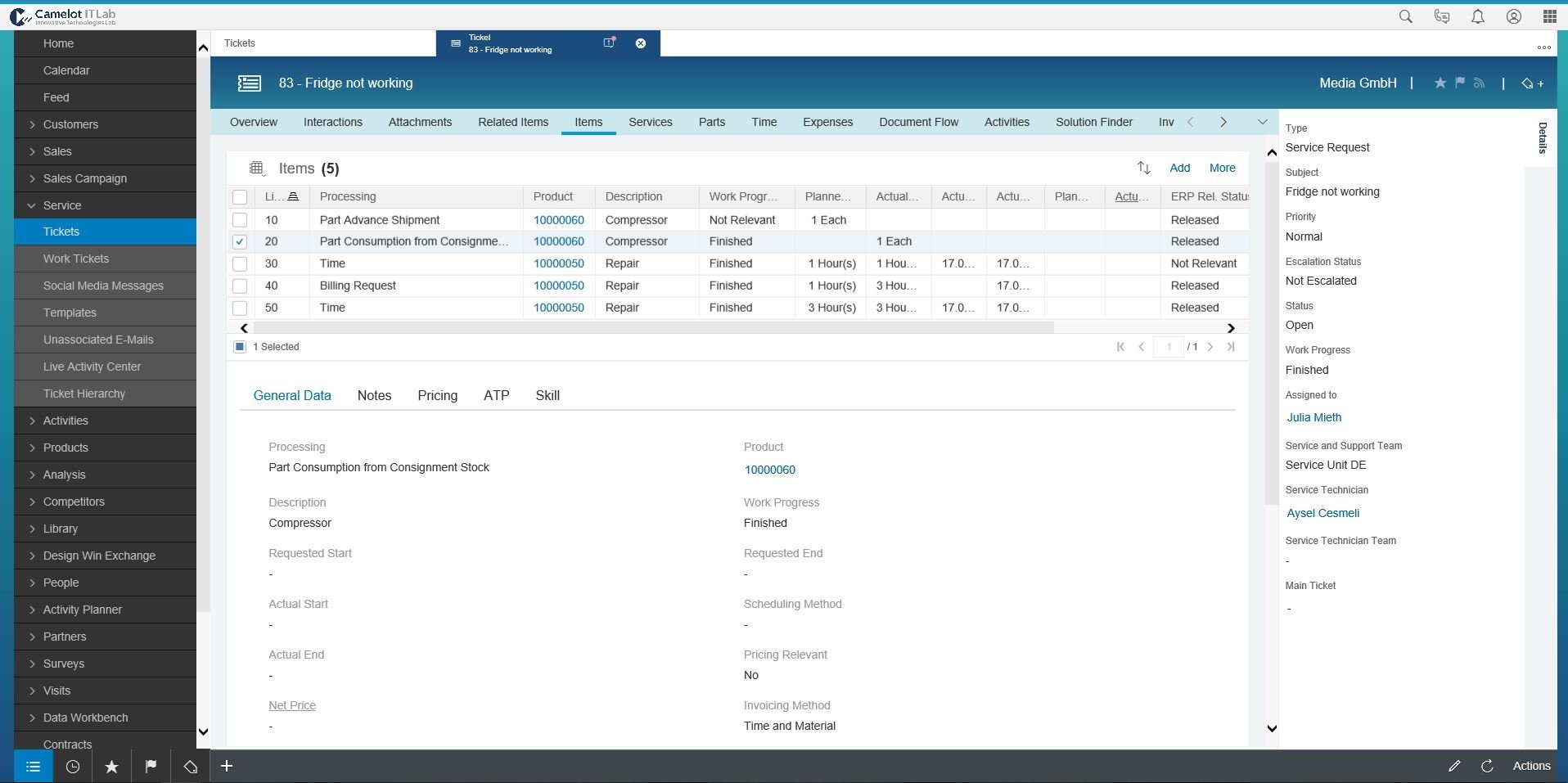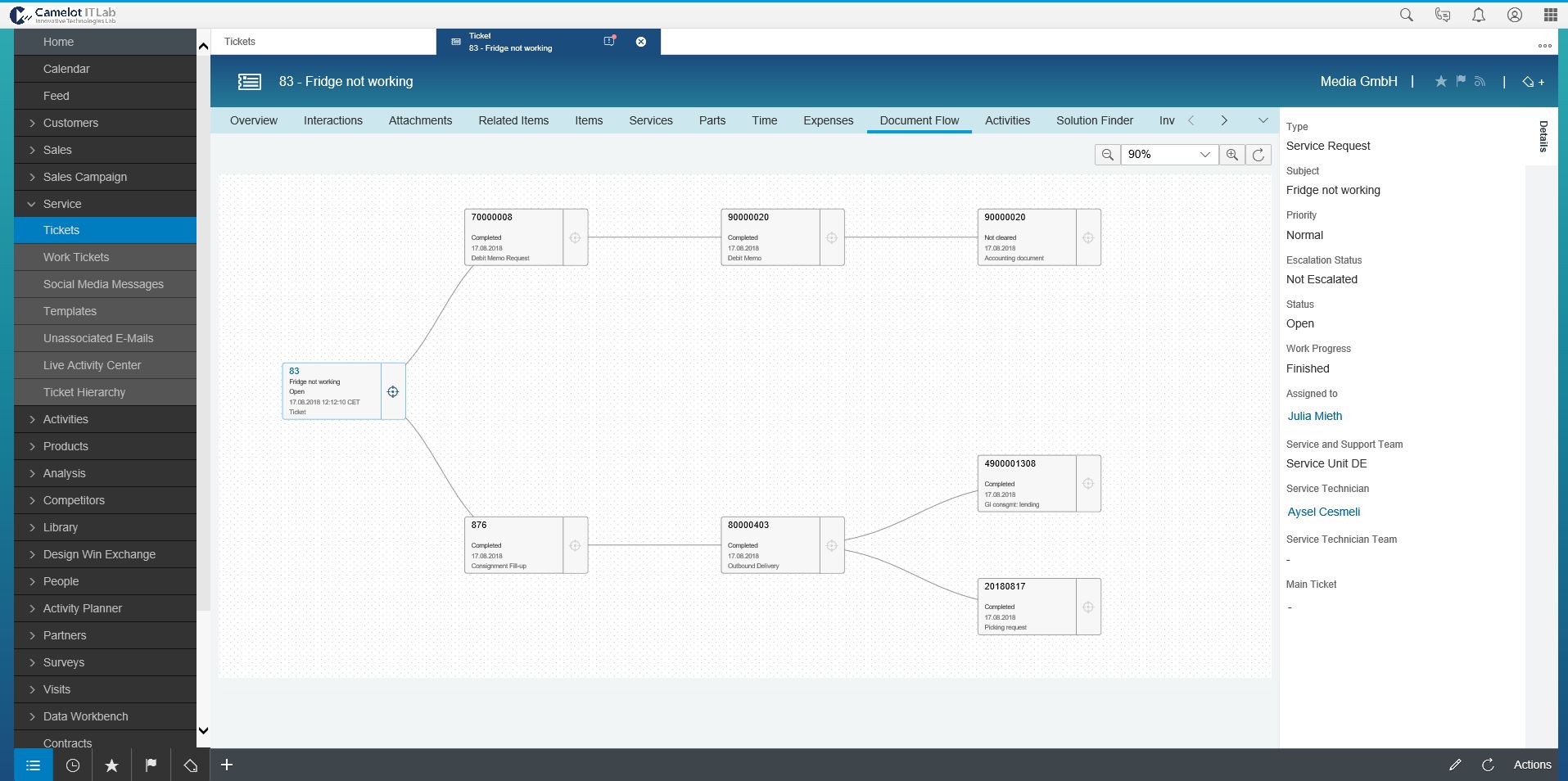In today’s digital and networked world, where everything happens much faster than it did a few years ago, the demands placed on good customer service have also risen.
Customers are waiting for the solution to their problem, the person responsible also wants to process his tickets as quickly as possible, the service technicians must be well coordinated first of all on the basis of qualifications and capacities, after which they must carry out the repair on site, document the job and report back. Finally, the back office needs to invoice the correct items and expenses promptly. It is therefore obviously desirable to have a system that can support and optimize these processes as automatically as possible.
The solution here is called: SAP C/4HANA Service Cloud together with SAP ERP or S/4HANA
By connecting to the backend system, where the process can be continued seamlessly, these requirements can be met pretty much automatically. This, in turn, enables you to realize a cost-efficient, end-to-end process and to optimally support existing customers by adhering to SLAs with short response times and full transparency, which leads to increased customer satisfaction and ultimately to higher customer loyalty.
In order to illustrate the advantages to you, we would like to show you the individual functions using a case study.
Example: Repair of a defective device
In our own C/4HANA Sales Cloud system, we can see that a customer bought a refrigerator from us some time ago. The data on when they bought the refrigerator, what serial number it has and how long the warranty on the refrigerator will last are all linked to the customer and provide a 360° overview.
The customer’s problem now is that the refrigerator no longer cools. The refrigerator is a latest generation device connected to the Internet, which allows it to send information regarding the defect directly to the manufacturer. The customer has a service contract that ensures a ticket is automatically created in the Service Cloud. This then appears “on the desk” of the service employee, who can now process it. The service employee can proactively contact the customer and arrange a repair. By having access to all the data, the customer and his refrigerator are quickly identified and the repair process can be initiated directly.
The open ticket includes the information that a service technician must be sent to the customer for repair on site. Within the C/4HANA system, various technician deployments can be coordinated and planned. The integrated resource planner displays the free time blocks of the various teams, and the qualifications can also be included in the details. Travel and setup times as well as target times can also be added and are assigned to the same “Demands” object in the Service Cloud.
 Figure 1: Ticket System in SAP C/4HANA Sales Cloud
Figure 1: Ticket System in SAP C/4HANA Sales Cloud
The dispatcher can enter all of the information on materials and outlay, which will probably be required, in advance in the ticket and provide them with prices from the ERP system via a pricing interface. Based on this an estimate can be sent to the customer. The customer therefore has full transparency about the costs, which means there will be no unpleasant surprises.
Communication with the ERP or S/4HANA system
In our example, the dispatcher obtains an overview of the available resources and see that the spare part, a compressor, must be sent to the customer in advance, because the technician cannot transport this part in his car. Delivery can be triggered directly via the service ticket. For this purpose, the corresponding processes in the connected ERP or S/4HANA system are accessed via an interface. Before delivery is initiated, the dispatcher can carry out an availability check for the compressor in order to ensure reliable scheduling. The existing availability check in the ERP or S/4HANA system is used for this purpose and accessed via an interface.
On site, the technician determines that, in addition to the compressor, the seals also have to be replaced. He already has some of these in his vehicle.
Following completion of the job, the technician documents the hours worked, the materials used and any other expenses. All of the data entered is then transferred to the ERP system to complete the service case. Hours worked can be transferred to CATS, used spare parts are booked out of stock, and an invoice for the technician’s deployment can be created in the SD module. The invoice then includes all expenses and materials used, including the compressor shipped in advance.
The dispatcher working in the Service Cloud can always maintain a complete overview of the processes in the ERP or S/4HANA system, as he also sees the document flow from the ERP or S/4HANA system in his own system. The dispatcher therefore has a fully documented process and can quickly find the correct documents in the system and provide information if the customer or service technician has any queries.
 Figure 2: Document Flow in SAP C/4HANA Sales Cloud
Figure 2: Document Flow in SAP C/4HANA Sales Cloud
Adjustment in line with individual requirements
The example shown here is just one of the many possibilities for mapping an integrated end-to-end service process with the C/4HANA Service Cloud. The flexibility and mobility of the cloud solution can thus be optimally combined with the commercial processes in ERP and S/4HANA systems.
You can minimize the number of manual processes, prevent duplicate data entries and avoid disruptions in the flow of information between systems and business units. You can realize IoT scenarios that enable you to optimally serve and retain existing customers or convince new customers to buy with an attractive range of services. We would be happy to support you in designing a service process optimized for your business model with the Service Cloud and your ERP or S/4HANA system.

